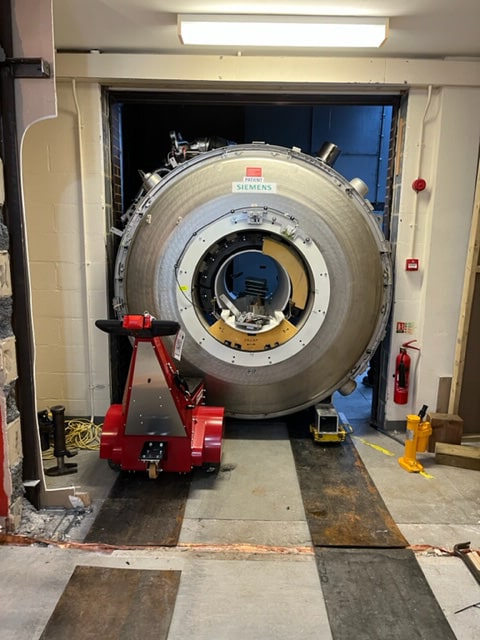MRI and CT Equipment De-installation: What You Need to Know
If you’re looking to replace your MRI or CT scanner, it’s essential that you have a smooth de-installation process for your old equipment. Since the de-installation process isn’t always clear, we wrote a guide for what to expect to help you save time, money, and headaches.
Selecting the most suitable company for removal
Once agreement has been made to replace the used imaging equipment you will need to source a logistics company to project manage the removal for you. Not all companies have the same quality standards, so be sure to check that the logistics company has a proven track record with years of experience and support. An experienced company will provide a knowledgeable project manager to be your designated liaison for the removal.
It is worthwhile selecting a business that will de-install and purchase the used equipment so that they can carefully coordinate the removal and give you the most lucrative return on the used items.
Identifying the safest method for removing your imaging equipment
A qualified logistics company will perform a site survey looking at the most accessible exit route and assessing the health and safety steps that will need to be considered during the removal or transportation of the fragile items. The Risk Assessment and Method Statement (RAMS) are an assessment of risk and tell you what controls are needed. A method statement will detail in what order those control measures will be used, and how the work with be carried out safely.
What’s involved in the de-installation and removal
An experienced company will provide a team of trained engineers to work with the nominated point of contact within the Hospital or Clinic to project manage the de-installation and removal. The equipment company should be flexible when agreeing on a time and date for removal to eliminate disruption to your staff and patients and help to keep your patient waiting lists to a minimum.
Once a mutually agreeable date is arranged, the company should organise cranes, skips, parking, and road closures that are required for a safe and carefully managed removal.
Careful, coordinated treatments of fragile medical equipment is essential. Once the items have been disconnected, an expert company will meticulously wrap and package the equipment so it’s ready for safe transportation and then load it onto a lorry, either via sack trucks or crane.
The room should be left safely and securely, with all cables protected and placed out of the way. You should be left as a happy customer, excited and ready for your new piece of equipment!
If an imaging equipment logistics company purchases the removed equipment, including CT, MRI, X-Ray, C-Arms and Ultrasounds, Fluoroscopy, Cath Labs and more, those items can be recycled, used in developing countries, or broken down for parts. Equipment should only be released providing WEEE (Waste Electrical and Electronic Equipment recycling) certified disposal protocols have been adhered to.
Importance of data deletion
Quality de-installations also include the removal of all sensitive patient data. Patient data and information stored in medical devices should be erased or removed before the equipment leaves the building.
Within the documentation provided by the engineers, should be a certification with proof of patient data destruction, this will be included in a WEEE removal certificate. WEEE II certification proves that a company is compliant with the EU's Waste Electrical and Electronic Equipment (WEEE II and WEEE II II) regulations. The WEEE II directive regulates how products are managed at the end of their lifecycle and encourages recycling and reuse in accordance with EU Directive 2012/19/EC. (More info can be found here).
Data destruction is done in several ways depending on the type of media and number of devices. The data on the device should be erased and rendered unrecoverable for the equipment to be legally used elsewhere.
Feeling ready for removal?
If you are, great! If you’re not, then please reach out to our team to help answer your questions. We hope you have a great equipment de-installation experience and that our guide helps you prepare for what’s to come.
